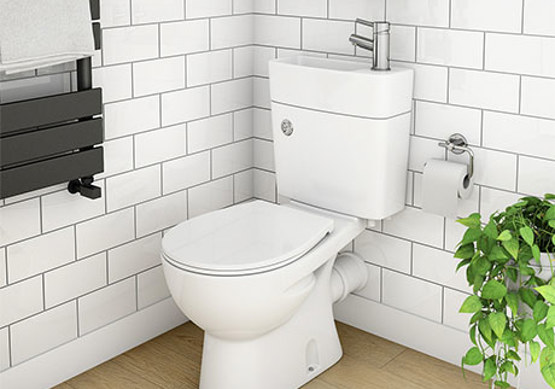Photo: Victorian Plumbing
Even if you are not planning to replace or renovate your bathroom, there are still several things you can do to save water and money in your bathroom:
Heating water for our hot water taps, showers, and baths accounts for roughly 20% of the energy bill in an average gas-heated home.
According to Waterwise water facts, “Although the earth is often called the blue planet, out of all the water on the planet, there is less than 1% accessible fresh water for us to use.” Demand for fresh and drinkable water continues to rise and new homes have to be designed and built with water saving measures in mind.
If you are thinking about renovating your bathroom or installing a new one, here are some tips that might be worth considering.
1. Install tap aerators
These increase the water pressure while reducing the amount of water coming from your tap.
2. Install a gravity-fed shower rather than a power shower
3. Install a shower with an in-built flow limiter
4. Install Water-Saving Shower Heads
It is estimated that the UK uses more than 2,000,000,000 litres of water each day in our showers. So there’s a lot of scope for saving water in your shower. A water-saving shower head restricts the volume of water that it allows to flow through it. Newer models typically reduce the amount of water used by almost 50% but still provide you with a great showering experience. This might not be suitable if the water pressure is low, or you have an electric shower.
5. Install a low-flush toilet.
Install a high efficiency toilet (HET), for example one with a dual flush.
Better still, look at the more recent option,
6. Install a rimless toilet. As well as looking modern and more streamlined, rimless toilets not only use less water per flush but they also clean more effectively. A standard toilet has a rim around the top of the bowl – it’s that sometimes difficult to clean place. With a rimless design, that hard to reach ‘under the rim’ section of your toilet has been taken away, making for a simpler look that is easy to clean and uses less water. Most rimless toilets are either high efficiency (HET) or ultra-low flush (ULF) and both of these designs minimise water usage.
7. Consider installing a grey water system that recycles the waste water from your shower, bath and basin.
8. Think about a combined sink and toilet
Often used to save space in tiny cloakrooms, the added bonus is that these units save water. The general idea of a toilet sink combo involves the toilet and sink communicating between each other, with the water used being recycled between the fixtures. For instance, the water you use to wash your hands can then be recycled and used to flush the toilet.

Photo: Victorian Plumbing
Even if you are not planning to replace or renovate your bathroom, there are still several things you can do to save water and money in your bathroom:
9. Always put the plug in first before you start running water. If your hot water takes a long time to come through you can collect the cold water in a bucket to use to flush the toilet or use it to water your plants.
10. Put a bit less water in your bath. You won’t notice a couple of inches less water and it will avoid excess water going down the overflow or sloshing onto the floor.
11. Reduce Shower Time - The duration of the average shower is about 10 minutes and the average shower head uses approximately 12 litres of water per minute. Reducing that to 5 minutes could save 60 litres of water per person per day. Even a one-minute reduction in your shower time will save you 10% in water usage. That’s a lot of money over a year if you are on a water meter.
12. Turn off the tap when you are not using it. This seems so obvious but how many of us keep the tap running while we are brushing our teeth, washing, or shaving? Try to make it a habit to only turn the tap on when you actually need water.
13. Don’t wash your towels after every use. It’s safe to wash it after every three normal uses (or more!). Remember that wet towels can harbour a lot of germs so make sure you hand your towels up to dry – and use your extractor fan or open the window to avoid condensation forming.
14. Adjust the float in the toilet cistern to allow less water to enter or fit a special toilet ‘brick’ in the tank that displaces water and reduces the amount of water that it takes to fill the cistern by several litres. If you flush your toilet five times a day, you can save about 340 litres per month
But our top tip for everyone is to
15. make sure your toilet isn’t leaking! We’re not talking about the kind of leak behind the cistern that you can see or a drip that you can hear; leaky toilets can constantly leak or drip inside the cistern itself and might not be obvious. The best way to make sure that your toilet is not leaking is to drop some dye in your toilet tank. Simply leave the dye in (being sure not to flush!) and then check back in an hour to see if any colour has leaked into the bowl. If there is a leak, you’ll eed to repair your toilet by replacing the broken or worn parts. With around 5-8% of toilets in the UK leaking, this is a very real problem.
Article updated on 19 April 2022